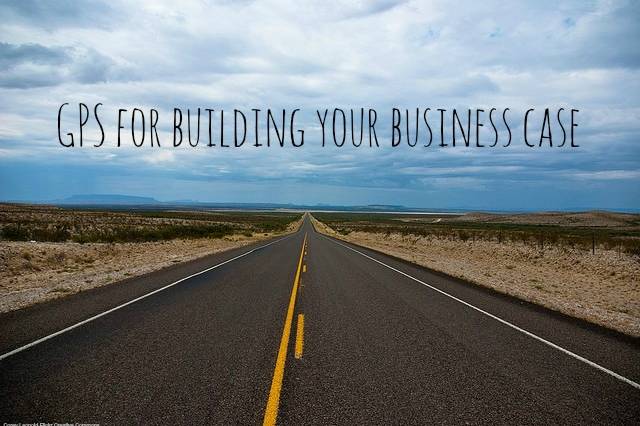 Policies are dull. No one wants to create them, no one likes to read them and certainly, few desire the job of enforcing them. But they can play an important role in outlining the rules of engagement around a particular set of online behaviors and have a strong role to play in the face of new situations where there are no standards. This is especially true with the wild west world of social media in business.
Policies are dull. No one wants to create them, no one likes to read them and certainly, few desire the job of enforcing them. But they can play an important role in outlining the rules of engagement around a particular set of online behaviors and have a strong role to play in the face of new situations where there are no standards. This is especially true with the wild west world of social media in business.
There are so many (too many?) social tools available to employees. For free, any employee can create a Twitter or Facebook account, create a LinkedIn profile, hook their profile to Instagram, start a blog, write a post in a forum, leave a comment, rate an article and the list goes on. But what can and should they be doing with these powerful tools? In one fell swoop a well-meaning person can damage another person’s reputation or threaten the confidentiality of a corporate initiative. Just yesterday, for example, I saw a colleague had tweeted about a new contract providing social media guidance to a company that is on one of my client’s competitive watch lists. We now know, with some degree of certainty, that we need to watch that competitor closely in the future as they are likely to emerge with some social media footprint. This information, in turn, has accelerated my client’s competitive approach. The tweeter was just expressing joy about a new client. But the ripple effect was used to impact change.
Most companies enter seriously into the social media sphere as a result of a crisis. Something bad happens and then it is like a peewee soccer league where everyone reacts and runs towards the ball. This is not an ideal situation to be in and mistakes are often made as positions are not well played. These social media crisis situations can happen to anyone and can be minimized with proper planning. On the flip side, organizations can *create* positive opportunities for the company by helping employees understand what is OK so they can be free to communicate positively. If you have 20K employees you now have the power to engage millions of people by leveraging the reach of your staff. But if staff are uncertain about what they can and can’t do online, many will avoid the social channel which can be a missed opportunity for the company.
As Enterprise-level social media gains widespread adoption, it is time to help guide staff to understand what is expected of them online and as a representative of the company. In many ways, the goal of an effective policy is not to squelch social media usage but to clearly define what is and is not acceptable for employees as a representative of the organization.
Some questions to consider when formulating a plan:
- What is your company culture like? Make sure that the social media policy reinforces company culture – an informal organization will have a different policy than, say, a government agency.
- How do you want the employees to engage with clients and prospects? Take into account the in-person sales and marketing channel strategy and align the social media policy to those best practices.
- What is considered confidential to your organization? Spell out what kind of information can and can’t be shared publicly.
- How should staff represent them selves to others? Standardize or provide guidelines so that there is an evenness to your online footprint. Should all sales staff, for example, use a similar moniker in their Twitter name or is it up to the person to decide?
- What does transparency mean to your company? Too often people confuse personal opinion with company-representation. Can staff in your organization share displeasure with the company’s product or services online without disclosing that she works for your company?
Once a policy has been developed – don’t stop there – people need help understanding what it all means. Provide training and examples to illustrate the points. Social media is so new to many people that there is no single shared understanding and skill level.
Social media policy is more complicated than a list of do’s and don’t – it needs to account for human behavior and focus on how to leverage the social channel appropriately. Your staff are online. Here is the opportunity to make the most of it and help them succeed personally and professionally along the way.
Written 12/2009, updated 11/2014
Warning: Attempt to read property "base" on array in /home3/trusten9/public_html/leadernetworks/wp-content/plugins/wp-user-profile-avatar/shortcodes/wp-user-profile-avatar-shortcodes.php on line 665
Warning: Attempt to read property "base" on array in /home3/trusten9/public_html/leadernetworks/wp-content/plugins/wp-user-profile-avatar/shortcodes/wp-user-profile-avatar-shortcodes.php on line 665
Warning: Attempt to read property "base" on array in /home3/trusten9/public_html/leadernetworks/wp-content/plugins/wp-user-profile-avatar/shortcodes/wp-user-profile-avatar-shortcodes.php on line 665
Warning: Attempt to read property "base" on array in /home3/trusten9/public_html/leadernetworks/wp-content/plugins/wp-user-profile-avatar/shortcodes/wp-user-profile-avatar-shortcodes.php on line 665
Related Posts
December 15, 2015
Why Inclusive Marketing should be on Your Agenda for 2016
Your guide to doing inclusive marketing - the right way!
November 18, 2014
Building the Business Case for Community
In every corner of an organization, the idea of having an online community is…
September 8, 2014
Big List 2.0: The Top B2B Online Customer Communities 2014
I am thrilled to share the most comprehensive directory of B2B online customer…
2 Comments
Add comment Cancel reply
This site uses Akismet to reduce spam. Learn how your comment data is processed.



Guiding Principles, Value Systems, Corporate Norms, Social Media Training, Communication Training, Employee Agreements all become in need of a ‘makeover’ with the new technologies that are enabling open communications. This continues to become a cornerstone to organizations whether non profit, small private and/or large corporate structures – working on culture, communication and collaboration norms will be critical success factors for our new decade.
Lauren,
excellent points here! thanks for the valuable point – a policy will be less effective if people – staff don’t know how to apply it so training and communications is paramount to adoption. Thanks Lauren for adding to the discussion.